When it comes to enjoying a slice of pizza, the experience goes beyond just the delicious toppings and perfectly baked crust. Pizzerias with unusual interiors elevate the pizza-eating experience into something truly special. Whether it’s through themed decor or cultural fusions, these spaces offer more than just great food. They provide a feast for the senses, creating a memorable atmosphere that keeps customers coming back for more. So, next time you’re in the mood for pizza, consider not just what’s on the menu, but also the unique ambiance that can make your dining experience all the more enjoyable.
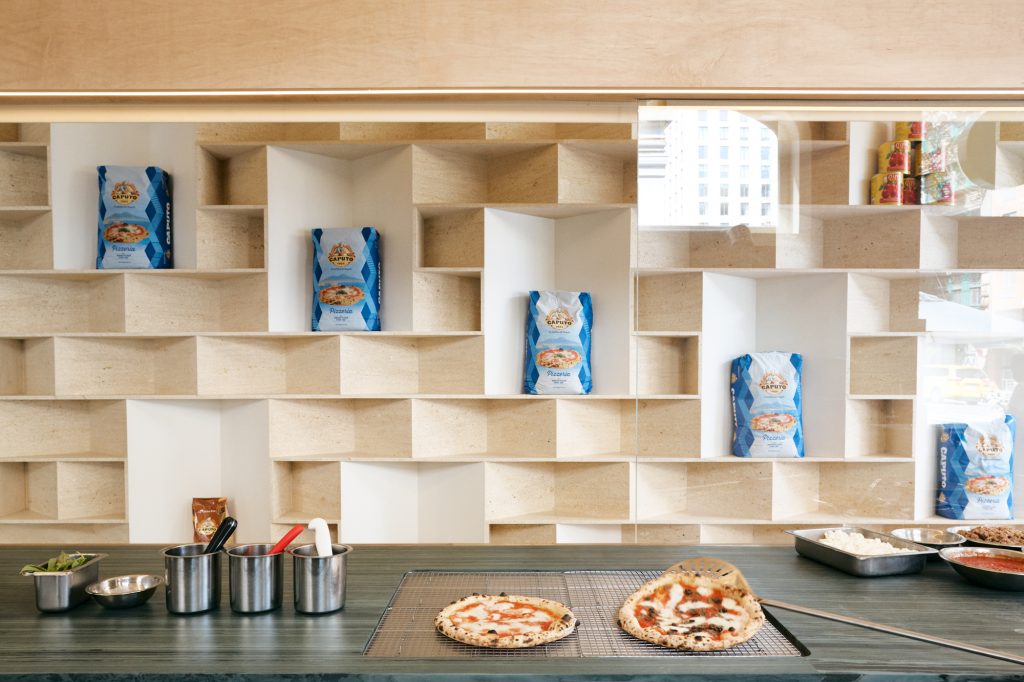
Nestled in the vibrant heart of Greenwich Village in the heart of New York City, SIMÒ Pizza, designed by Büro Koray Duman, which has offices in Manhattan and Istanbul, stands as a testament to the harmonious blend of architecture, culinary tradition, and community.
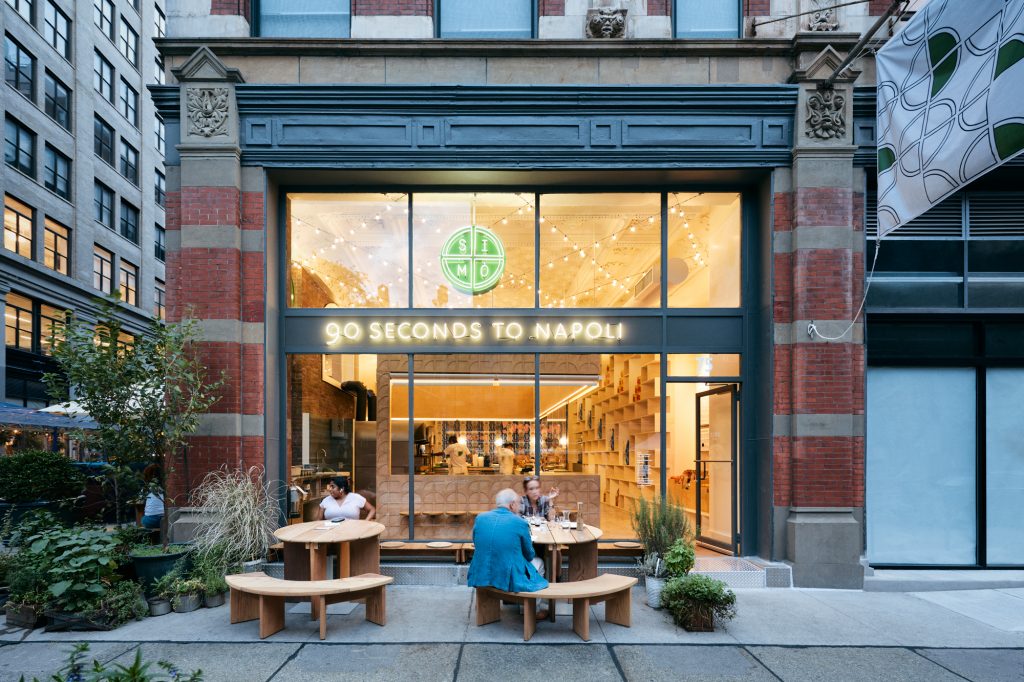
SIMÒ Pizza by Büro Koray Duman (also header image)
Since its inception in 2018 by Naples-born chef Simone Falco, this pizzeria has quickly gained a reputation for serving authentic Neapolitan pizza crafted from high-quality ingredients. At the core of SIMÒ’s design is the concept of cooking as performance. The open kitchen serves as the heart of the restaurant, inviting diners to witness the artistry behind their meals. With chefs working in full view, the preparation of pizza transforms into a captivating show, allowing patrons to engage with the cooking process. This design choice echoes the traditional outdoor kiosks of Naples, fostering a sense of authenticity and connection to the roots of Neapolitan cuisine.
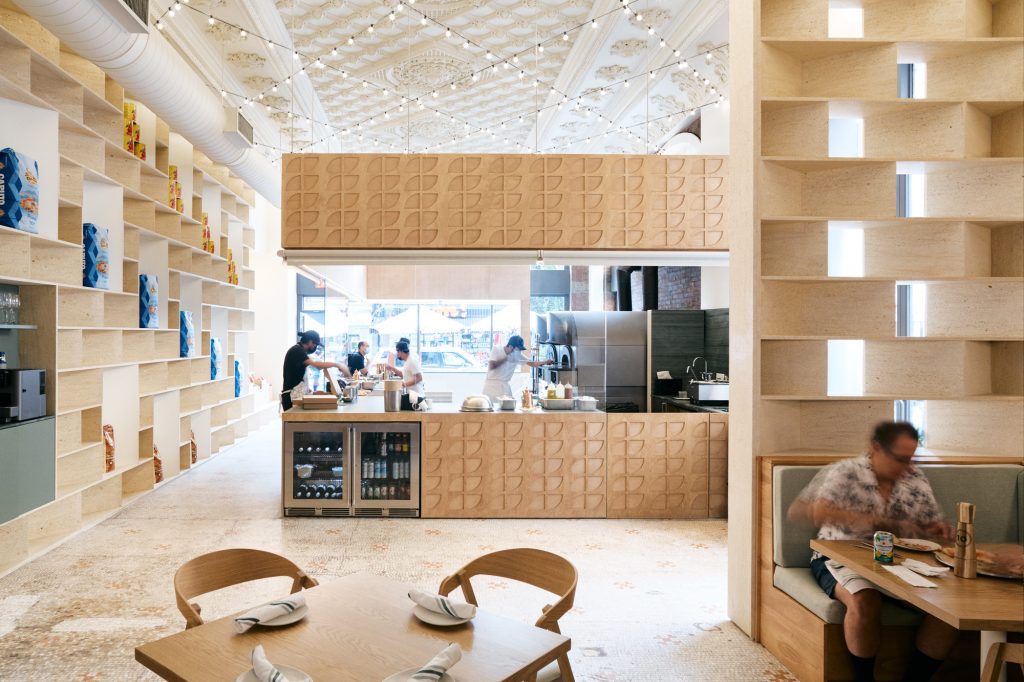
SIMÒ Pizza by Büro Koray Duman
The chef’s counter, adorned with lush green Italian marble countertops, adds a touch of elegance while reinforcing the restaurant’s commitment to high-quality materials. Custom wood-paneled seating complements the vibrant atmosphere, creating a warm and inviting space for guests to gather.
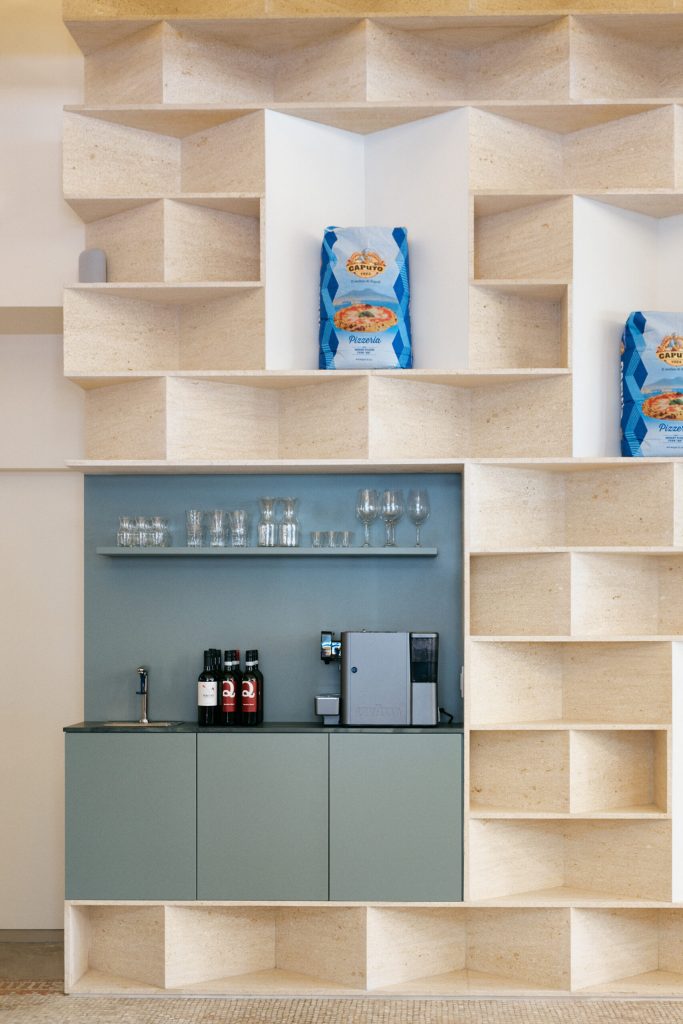
SIMÒ Pizza by Büro Koray Duman
The design of SIMÒ Pizza is deeply influenced by the concept of pattern as heritage. A striking feature of the restaurant is the long shelving wall, constructed from volcanic stone sourced from Naples, traditionally used for building facades. This material not only pays homage to the culinary origins of the dishes served but also adds a raw, organic texture to the space. The three-dimensional angled pattern of the shelving contrasts beautifully with the milled wood liner of the kitchen, which incorporates the restaurant’s logo into a geometric motif.
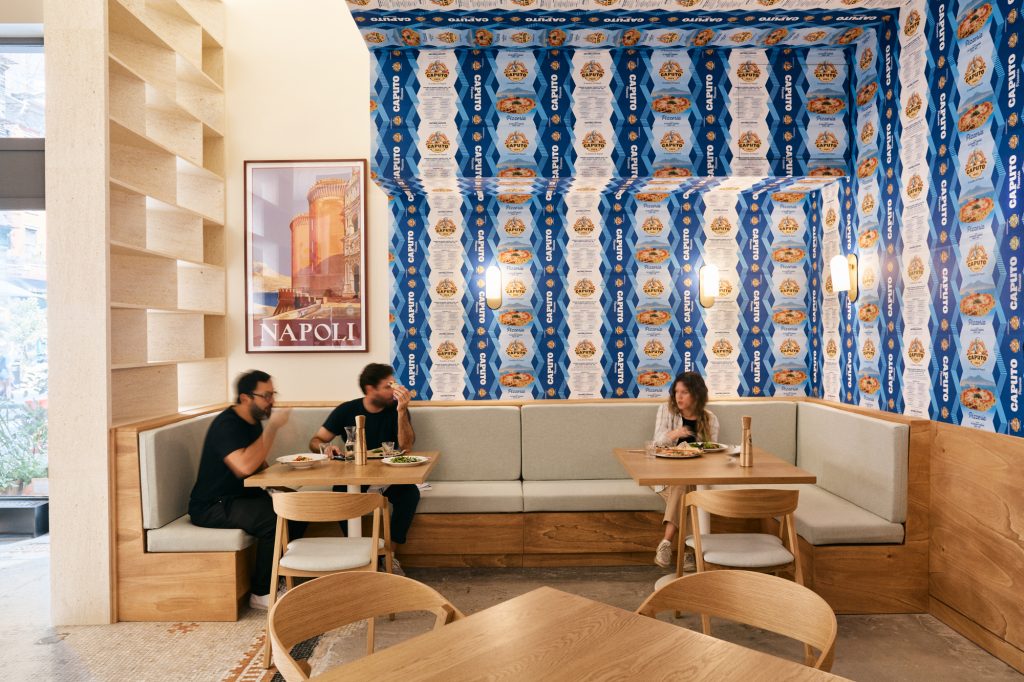
SIMÒ Pizza by Büro Koray Duman
The design also embodies the concept of the piazza as a social space, where community and connection flourish. Above, a diagonal grid of strung lights mimics the ambiance of a lively courtyard, inviting guests to linger and enjoy the vibrant atmosphere. The layout encourages social interaction, making it an ideal spot for friends and families to gather over shared meals and conversations.
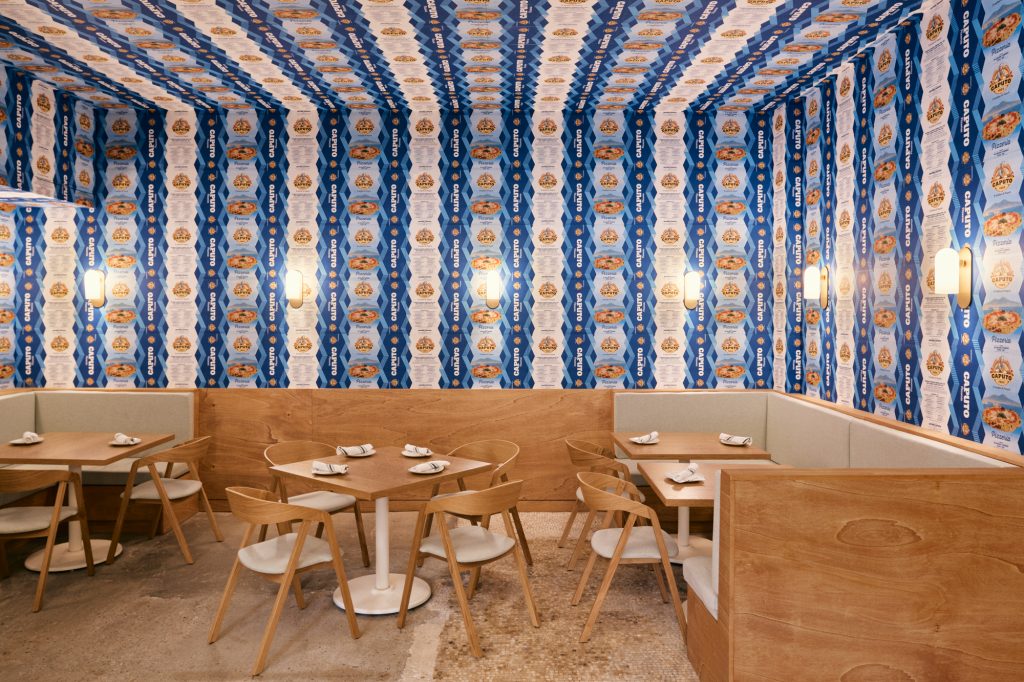
SIMÒ Pizza by Büro Koray Duman
Additionally, the original mosaic tile floor and the intricately restored historic tin ceiling evoke a sense of nostalgia, celebrating the building’s past as the famed Albert Hotel from the late 19th and early 20th centuries. These elements serve as a backdrop for the dynamic experience that SIMÒ Pizza offers, reminding diners of the rich history of Greenwich Village while providing a contemporary setting for culinary exploration.
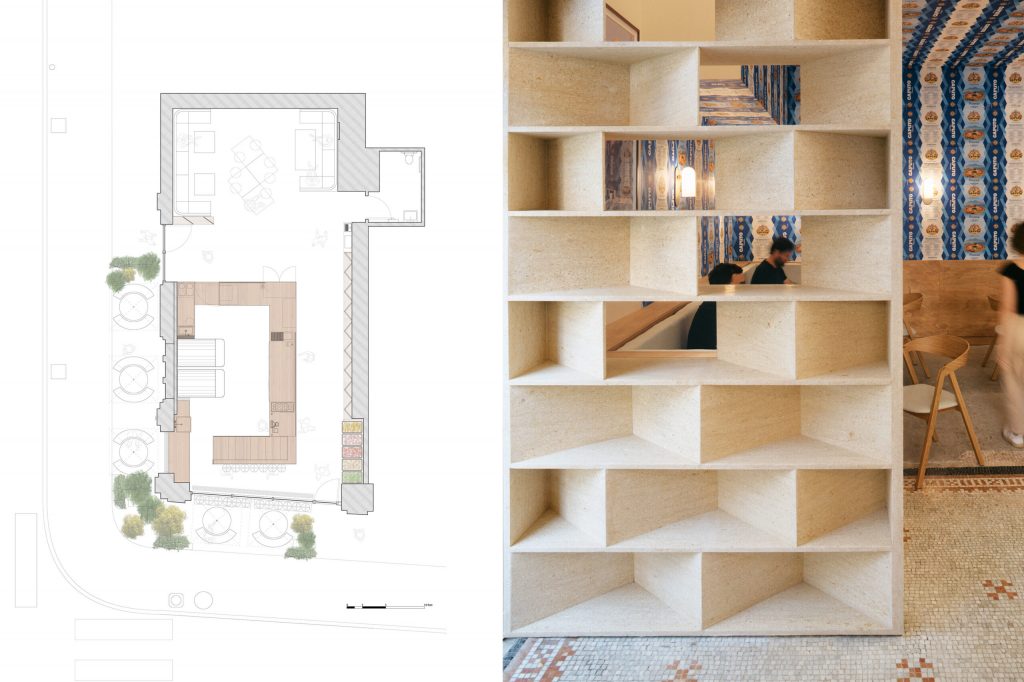
SIMÒ Pizza by Büro Koray Duman
By weaving together the elements of cooking as performance, heritage through materiality, and the social nature of dining, Büro Koray Duman has created a pizzeria that not only serves exceptional food but also cultivates a vibrant gathering place for the community.
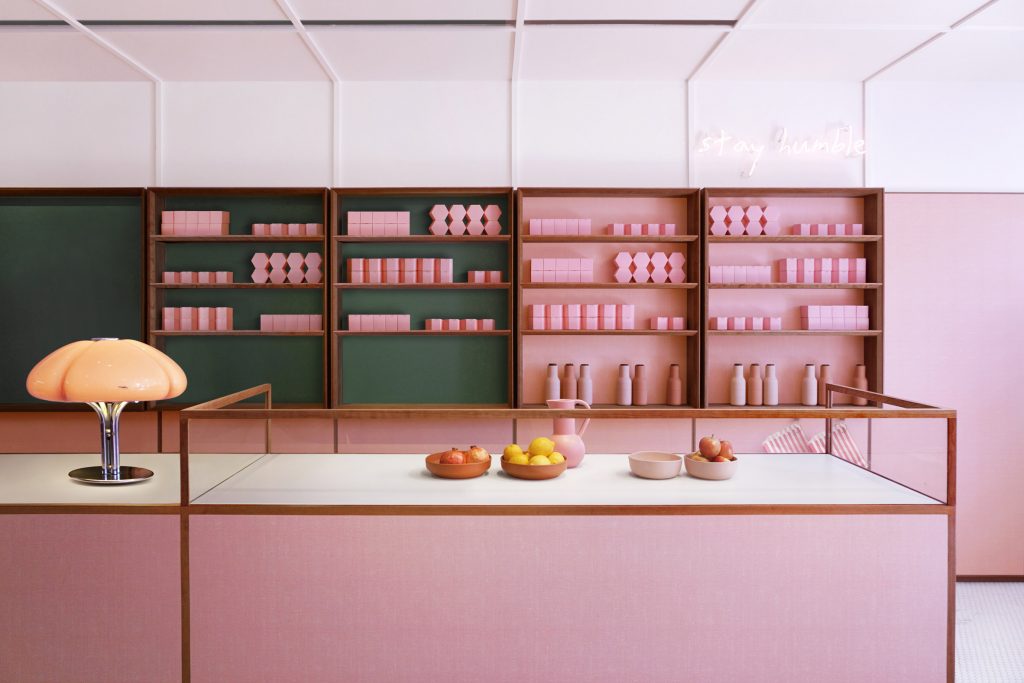
Humble Pizza by Child Studio
Designed by Child Studio, Chelsea’s Humble Pizza invites diners into a vibrant world where the playful spirit of the 1950s meets contemporary vegan cuisine. This plant-based pizzeria captures the essence of traditional workmen’s cafes—often affectionately dubbed “greasy spoons”—while offering a fresh and modern twist.
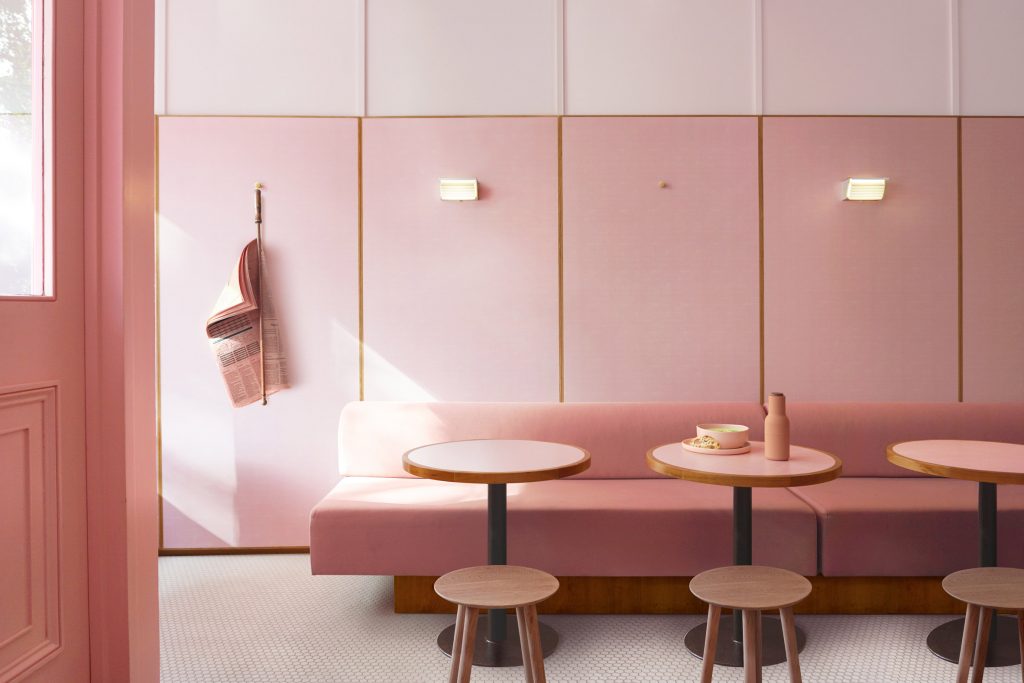
Humble Pizza by Child Studio
The interior of Humble Pizza is a striking homage to the past, featuring nearly all-pink surfaces that evoke the charm of vintage cafes. Child Studio drew inspiration from the pastel-colored Formica surfaces that were popular in London’s cafes during the mid-20th century. The choice of candy pink Formica surfaces throughout the eatery not only brings a cheerful vibe but also connects diners to the history of casual dining in London. This laminated composite material, invented in 1912, adds a layer of authenticity and nostalgia to the design.
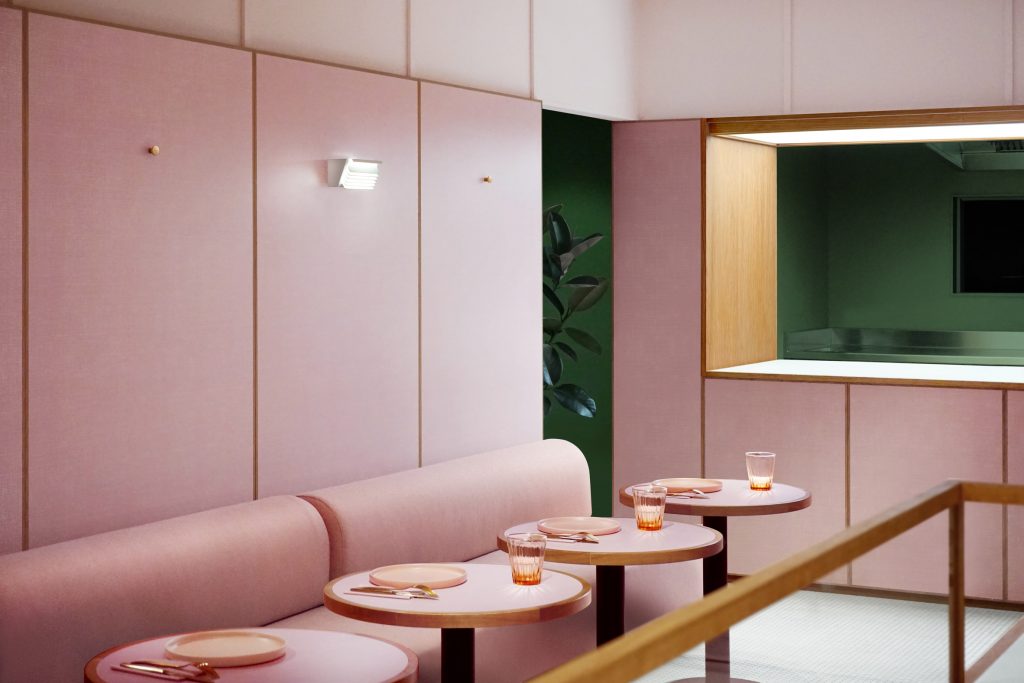
Humble Pizza by Child Studio
Attracted to the cinematic quality of London’s Formica cafes, Chieh Huang and Alexey Kostikov, the creative minds behind the studio aimed to reinterpret this nostalgic aesthetic for a contemporary audience. The studio collaborated closely with the Formica factory to achieve a subtle, linen-like pattern on the panels, enhancing the tactile quality of the space.
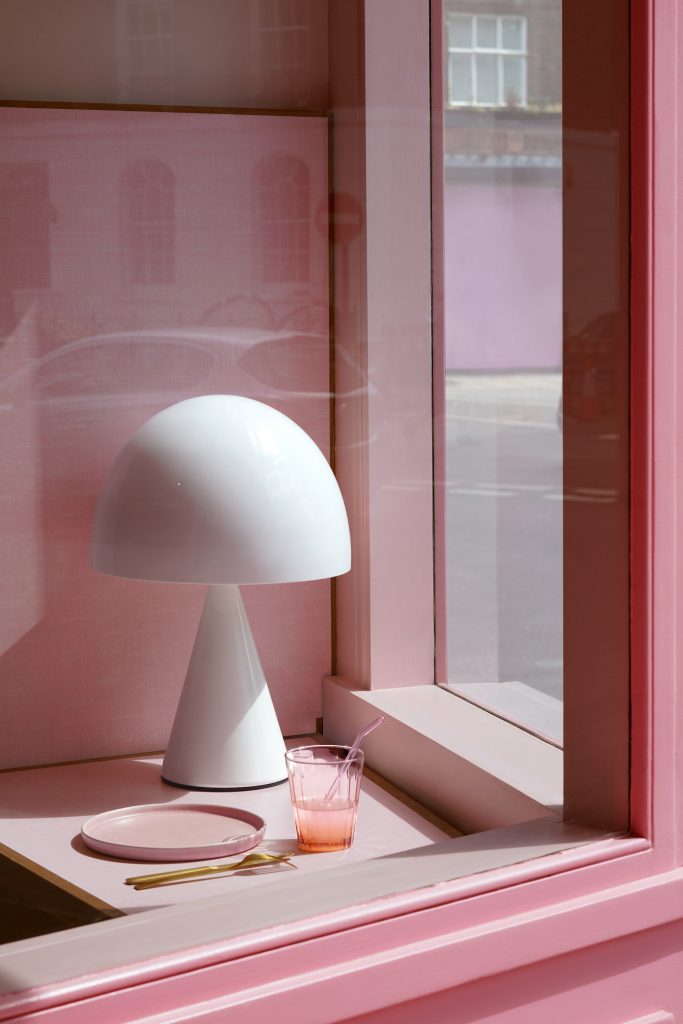
Humble Pizza by Child Studio
A standout feature of the design is a candy-pink seating banquette that stretches towards the back of the restaurant. Here, a partition with a recessed rectangular opening provides a glimpse into the bustling forest-green kitchen. The top and bottom of this opening are illuminated, creating a “cinematic focal point” that highlights the chefs at work, transforming food preparation into a performance for diners.
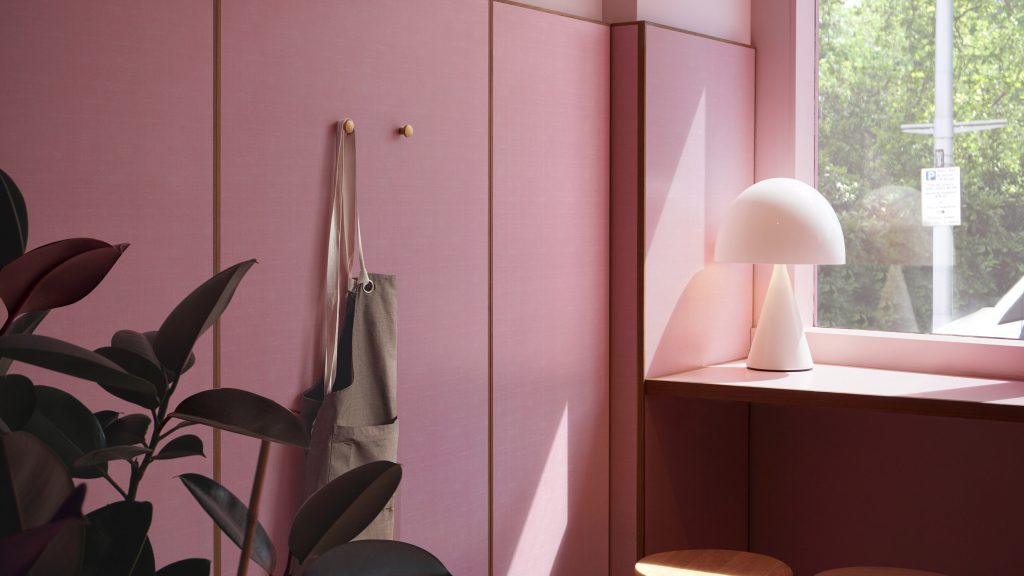
Humble Pizza by Child Studio
Child Studio has ensured that the decor adds to the whimsical atmosphere. Pink broadsheet newspapers are hung intermittently across the walls, while shelves are adorned with an array of pink ornaments, contributing to the lighthearted ambiance. A vintage lamp by Italian designer Luigi Massoni adds a touch of elegance, alongside a neon sign featuring the eatery’s slogan—a modern nod to the past.
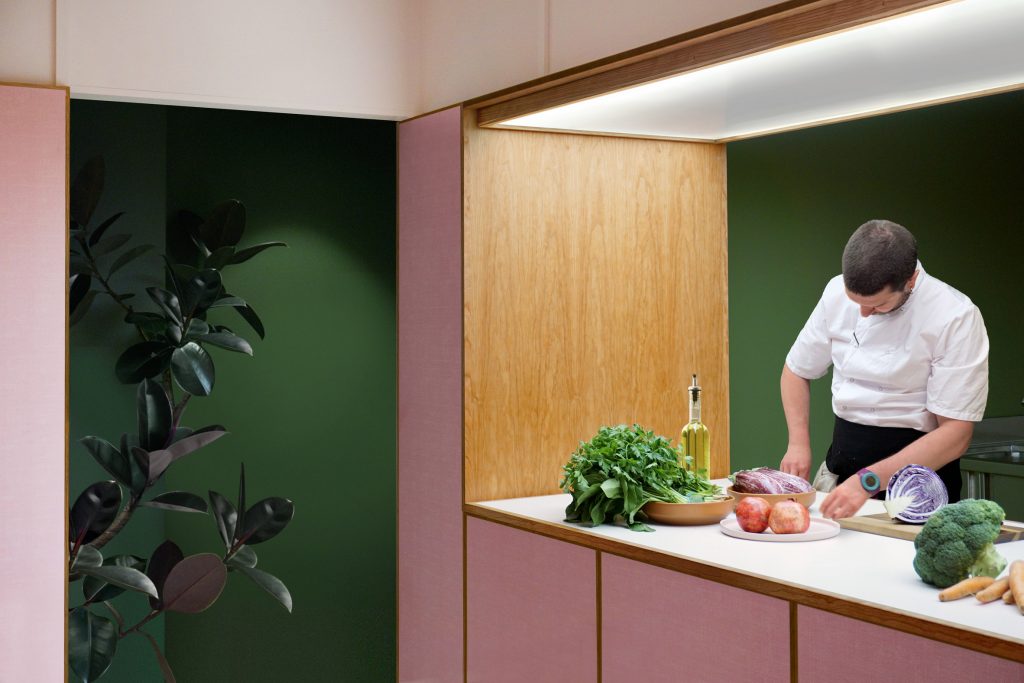
Humble Pizza by Child Studio
The front facade of Humble Pizza further embraces its vintage inspiration, stripped back to reveal original timber paneling and ironwork, tying the interior aesthetic to the building’s historical context.
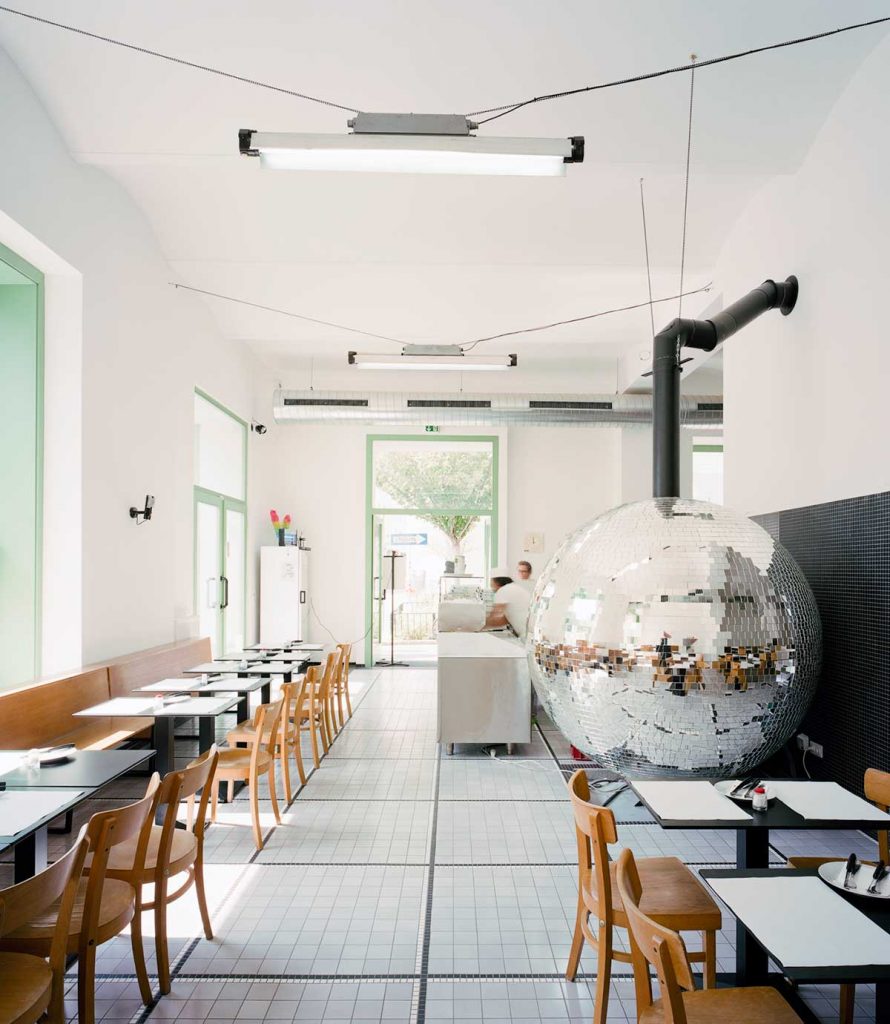
Disco Volante by Lukas Galehr
Located in the heart of Vienna, Disco Volante, designed by Austrian architect Lukas Galehr, is defined by a stunning centerpiece: a spinning oven shaped like a giant disco ball, which not only captures the eye but also transforms the very atmosphere of the restaurant.
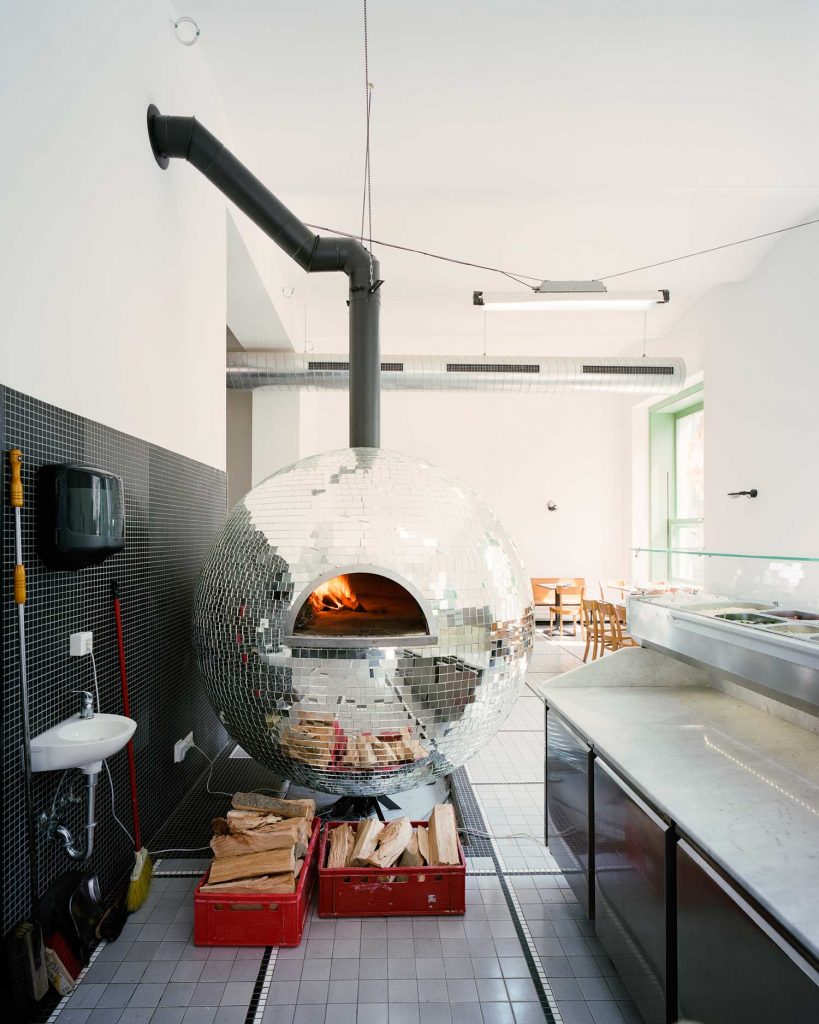
Disco Volante by Lukas Galehr
Covered in approximately 7,500 tiny mirrored tiles, the spherical oven is a true spectacle. Anchored to a central chimney, it pivots gracefully, allowing chefs to craft pizzas while putting on a visual show for diners. The brilliance of the design is magnified in the evenings, when the lights dim and colorful spotlights illuminate the oven, casting vibrant pink, green, and blue dots across the clean white walls and ceilings. It’s a captivating fusion of culinary art and visual spectacle that elevates the dining experience.
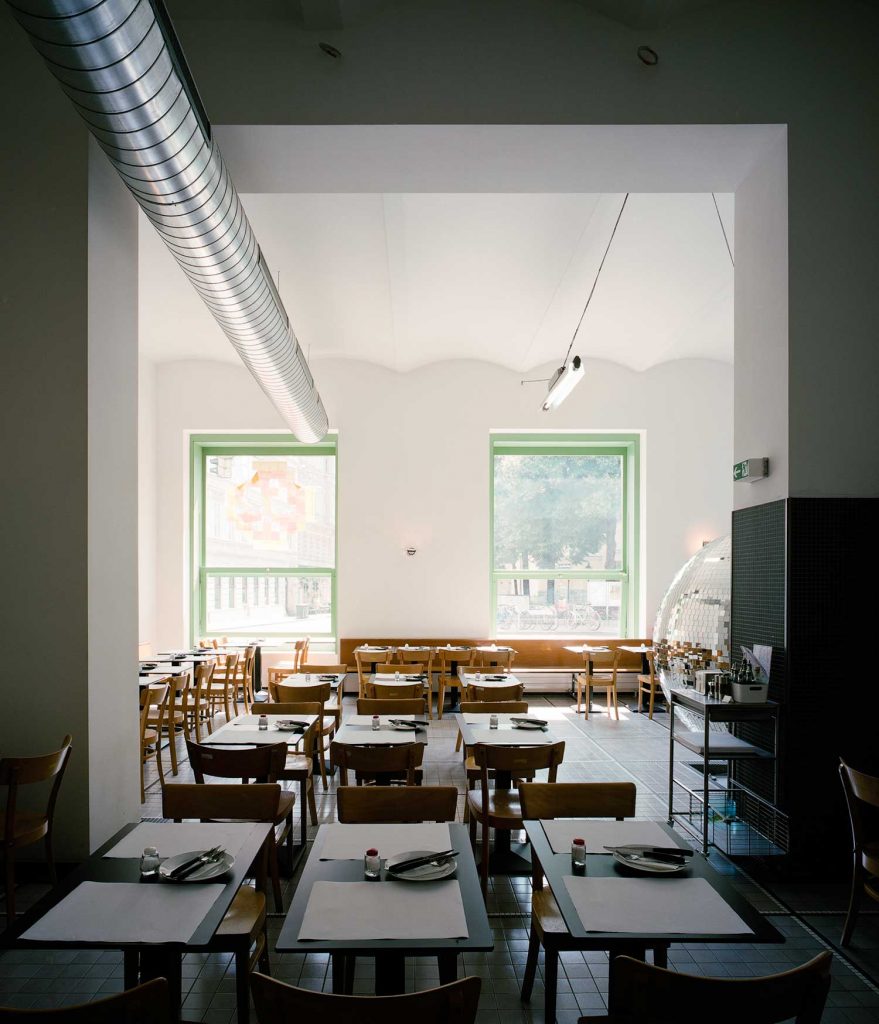
Disco Volante by Lukas Galehr
Disco Volante, which loosely translates to “flying disc,” pays homage to traditional Neapolitan pizzerias while infusing the spirit of the “Italo-Disco” era of the 1970s and 80s. The restaurant features a vaulted ceiling, smooth tiled floors, and clean white walls that evoke the classic Italian pizzeria vibe. Black mosaic tiles line the walls of the pizza-making area, complementing the sleek design and enhancing the overall aesthetic.
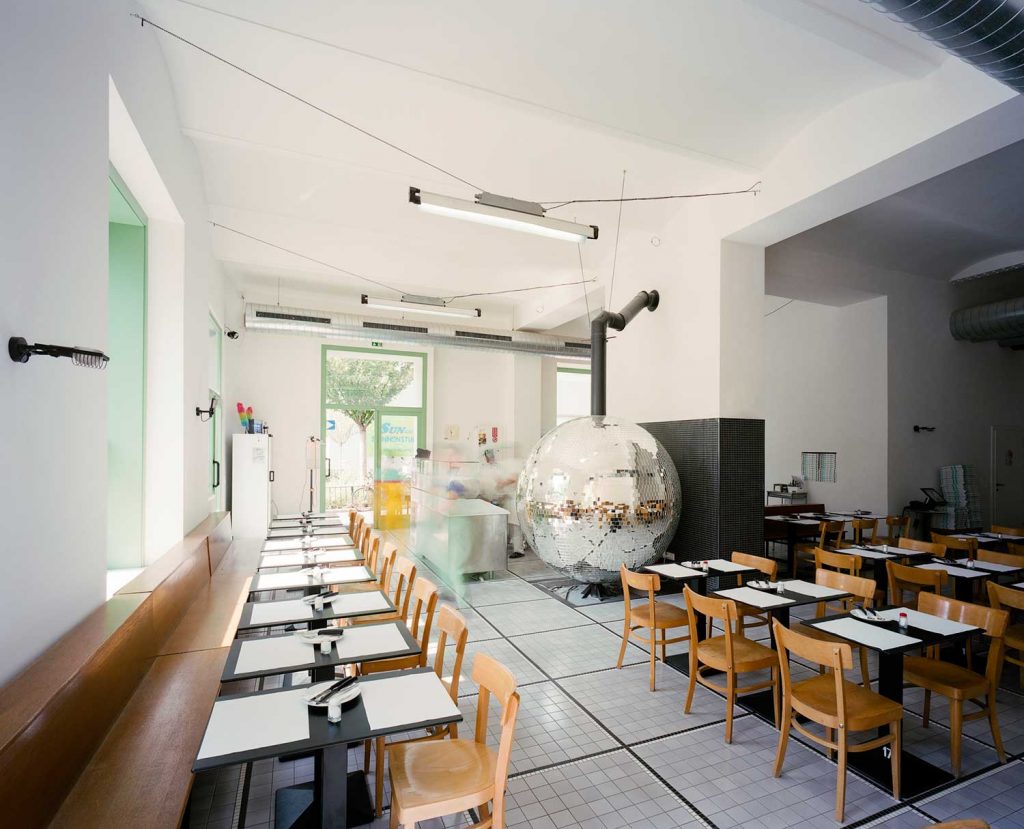
Disco Volante by Lukas Galehr
The choice of simple wooden chairs and benches creates rows of seating that allow most diners an unobstructed view of the glittering oven. This intentional layout fosters a communal atmosphere, encouraging conversation and connection among guests as they enjoy their meals.
The design philosophy behind Disco Volante is not just about creating a visually stunning space but also about capturing the essence of bustling Neapolitan pizzerias. The additional meter of height revealed by removing the existing ceiling contributes to a canteen-like ambiance, reminiscent of crowded pizzerias drenched in neon light. This design choice, combined with the use of former church benches and timber chairs typical of Vienna’s city departments, creates a unique and slightly playful environment.
Tables are intentionally sized to leave just enough room for a pizza and a beverage, reinforcing the focus on the dining experience and fostering a sense of intimacy among guests. Galehr’s approach, while unconventional, has proven to be a key element in the success of Disco Volante, inviting diners to enjoy their meals while being enveloped in a vibrant atmosphere.